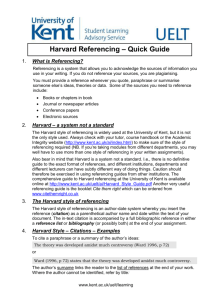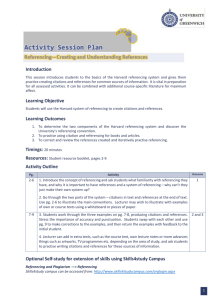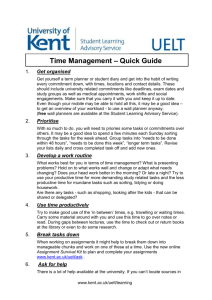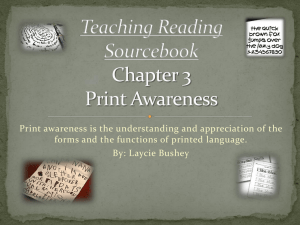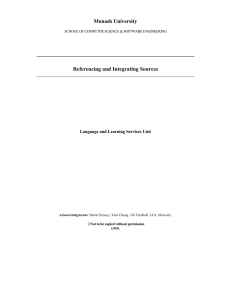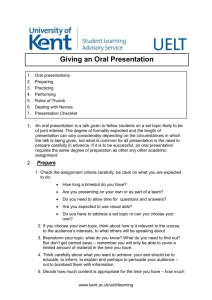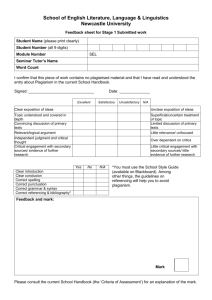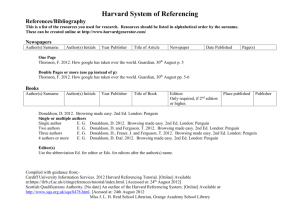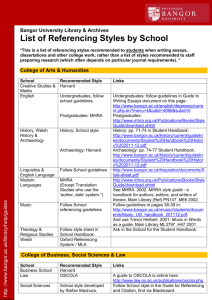Systems of Referencing
advertisement
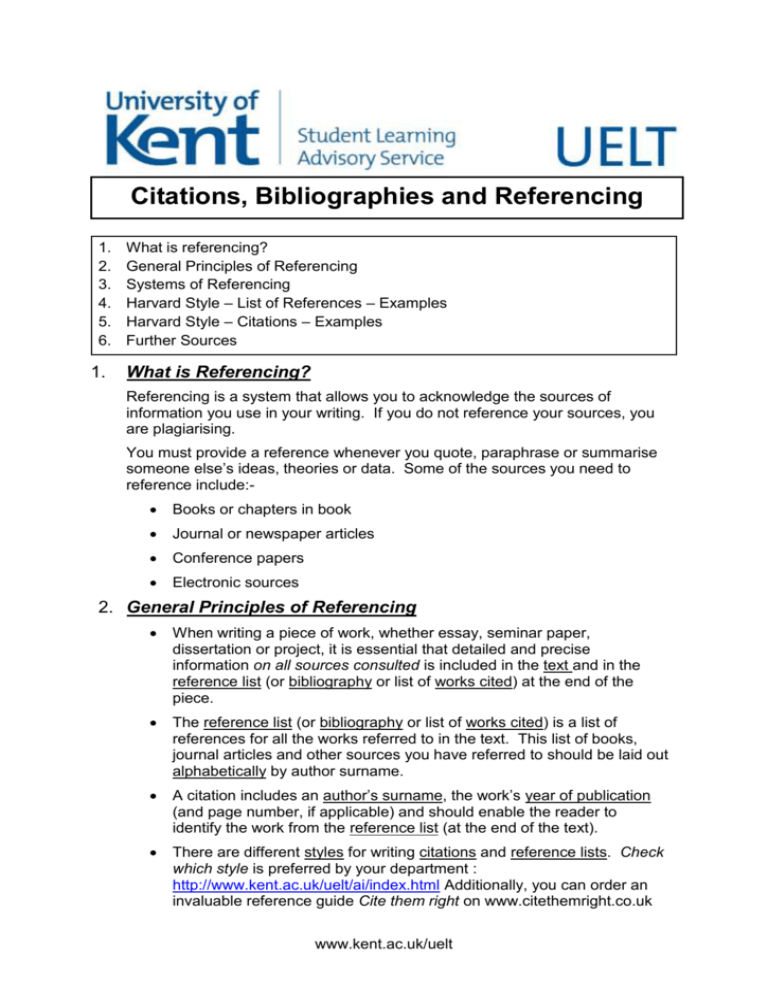
Citations, Bibliographies and Referencing 1. 2. 3. 4. 5. 6. 1. What is referencing? General Principles of Referencing Systems of Referencing Harvard Style – List of References – Examples Harvard Style – Citations – Examples Further Sources What is Referencing? Referencing is a system that allows you to acknowledge the sources of information you use in your writing. If you do not reference your sources, you are plagiarising. You must provide a reference whenever you quote, paraphrase or summarise someone else’s ideas, theories or data. Some of the sources you need to reference include: Books or chapters in book Journal or newspaper articles Conference papers Electronic sources 2. General Principles of Referencing When writing a piece of work, whether essay, seminar paper, dissertation or project, it is essential that detailed and precise information on all sources consulted is included in the text and in the reference list (or bibliography or list of works cited) at the end of the piece. The reference list (or bibliography or list of works cited) is a list of references for all the works referred to in the text. This list of books, journal articles and other sources you have referred to should be laid out alphabetically by author surname. A citation includes an author’s surname, the work’s year of publication (and page number, if applicable) and should enable the reader to identify the work from the reference list (at the end of the text). There are different styles for writing citations and reference lists. Check which style is preferred by your department : http://www.kent.ac.uk/uelt/ai/index.html Additionally, you can order an invaluable reference guide Cite them right on www.citethemright.co.uk www.kent.ac.uk/uelt 3. Systems of Referencing There are many different styles for writing citations and bibliographies: There is the name and date system which includes Harvard, MLA, Chicago and APA systems There is a footnote system which includes MHRA and OSCOLA legal referencing systems. There is a numeric system which includes the Royal Society of Chemistry, Physical Reviews and the IEEE systems. When citing electronic materials, you should include the author, date, title of document, the date last updated, the URL and the date you accessed the work, (the format will depend on the reference style given). RefWorks and EndNote are reference management software which will format automatically your citations and reference list according to the selected citation style. 4. Harvard Style – List of references – Examples A whole book: Ward, R (1996). Changes in Biochemistry. London: University College London Press. A chapter in a book: Crane, A (1991). How Biochemistry Changes. In: Hudson, W. and French, C. eds. Living Biochemistry. Massachusetts: MIT Press, pp. 80 – 83. A journal article: Kaplan, J. (2008). Historical Changes. Educational Psychologist. 42(6), pp. 536 – 9. Government publications: Department of Education. Annual Report 2000. HMSO, London. 5. Harvard Style – Citations – Examples To cite a paraphrase or a summary of the author’s ideas: The theory was developed amidst much controversy (Ward 1996, p 72) or Ward (1996, p 72) states that the theory was developed amidst much controversy. The author’s surname links the reader to the list of references at the end of your work. Where the author cannot be identified, refer by title : Figures in a recent survey (Trends in Tourism 2004, p 12) showed that… To reference the overall content of a work, you do not need to include page numbers because it is the entire work you are referring to: Kaplan and Jones (2005) studied the effect of pollution in five major cities… To cite a direct quotation: ‘Family crisis intervention has to be on a 24 hour basis’ (Ward & Hicks 1997, p 6). www.kent.ac.uk/uelt 6. Further Sources See the Academic Integrity website: (http://www.kent.ac.uk/ai/index.html) to find out which style is used by your department, download guides or online tutorials: These books can be found in the Templeman Library: British Standards Institution (1989). British Standard recommendations for references to published materials, BS 1629: 1989. London: BSI. Gelfand, H. and C.J. Walker (2001). Mastering APA Style: Student’s Workbook and Training Guide. Rev. edn. Washington, DC: American Psychological Association. (online tutorial available at - http://www.apastyle.org/learn/tutorials/basics-tutorial.aspx) Gibaldi, J. (1998). MLA style manual and guide to scholarly publishing, 2nd ed. New York: Modern Language Association of America. (http://owl.english.purdue.edu/owl/resource/747/02/) Modern Humanities Research Association (2002). MHRA style book: notes for authors, editors and writers of theses, 5th rev.ed. London: Modern Humanities Research Association. (http://www.mhra.org.uk/Publications/Books/StyleGuide/index.html) University of Chicago Press (2005). The Chicago Manual of Style: For Authors, Editors and Copywriters. 15th edn. Chicago: London: University of Chicago Press. (online at http://www.chicagomanualofstyle.org/home.html) OSCOLA style guide (Online at http://www.competition-law.ox.ac.uk/published/oscola.shtml) IEEE style guide (Online at http://www.ieee.org/portal/cms_docs/pubs/transactions/auinfo03.pdf) www.kent.ac.uk/uelt
